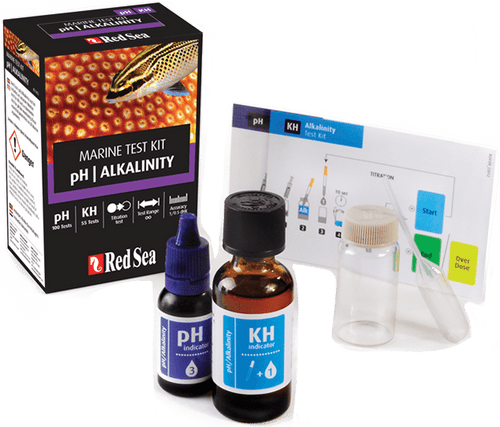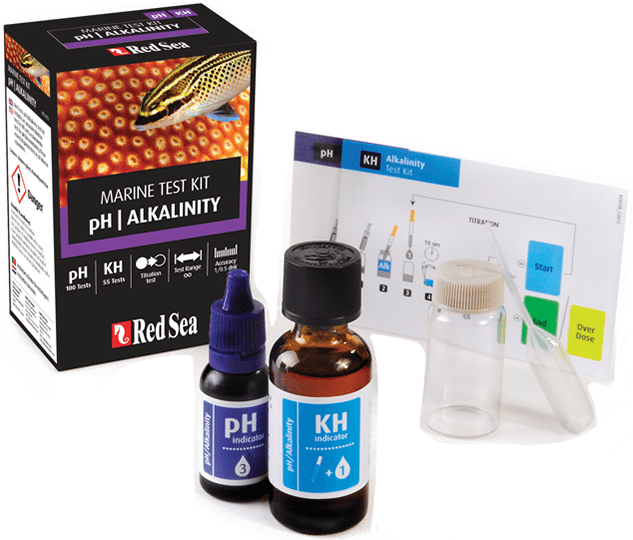Red Sea MCP pH/Alkalinity Test Kit
Red Sea MCP pH/Alkalinity Test Kit
check_circle Fast Shipping
check_circle Quality Products
check_circle Affordable Price
Reach out to us on ''available to order'' items via WhatsApp or email
Out of stock
Couldn't load pickup availability

Red Sea MCP pH/Alkalinity Test Kit
package_2
Product Description
Product Description
Red Sea pH/Alkalinity Test Kit (pH - 100 Tests/Alk - 55 Tests)
The Red Sea pH and Alkalinity test allows you to test the acid-alkalinity levels within your aquarium, keeping the water just right for your fish and inverts.
This high-quality kit for marine and reef aquarium owners includes two bottles of solution, syringe and glass vial and measures both pH and total alkalinity for marine aquariums.
The kit includes a table of instructions so you can easily work out your levels, as well as a color chart so you can easily identify the levels.
Introduction to pH & Alkalinity:
The pH is a very important parameter in the biology of aquatic organisms. It is a measure of the acidity or basicity of the water. The scale runs from zero to 14. Zero is the most acidic, 7 is neutral and 14 is the most basic. A change of 1 pH unit, for example from 7 to 6, means that the water gets 10 times more acidic.
Due to its chemistry, salt-water is able to absorb a certain amount of acidic matter without a resulting change in pH. The substances in the water that do this are called buffers. The ability of water to withstand changes in pH is called buffer capacity. Based on a method of measuring buffer capacity it is referred to as the alkalinity of seawater. In some of the literature alkalinity is termed “Carbonate Hardness” or “ KH Carbonate Buffer”. This is exactly the same measurement as is measured in the Alkalinity Mini-Lab Test.
pH and Alkalinity
The pH of natural seawater varies geographically in the world’s oceans between 8.1 and 8.4. On a local scale the pH is however remarkably stable. This is due to dissolved buffers (mainly bicarbonates), which prevent pH changes. Because of the enormous volume of the ocean, a nearly inexhaustible stock of buffers are present: the sea can take up large amounts of acids, without a noticeable change in pH.
Compared to the sea the volume of a marine aquarium is very limited and therefore the alkalinity is also limited. As fish produce acid waste products and as the buffering substances are used up by calcareous algae and invertebrates, the buffer capacity may become so low that the pH could suddenly fall. This would be very dangerous to all organisms in the aquarium.
The alkalinity is measured in so called mil-equivalents of alkaline substances (for example sodium bicarbonate) per liter. These alkaline substances have the power to prevent pH drops. The alkalinity of natural seawater is approximately 2.5 mil-equivalents per liter. This level should also be maintained in the marine aquarium.
A common symptom of an unsuitable pH is pH-stress. Especially in the marine aquarium, unsuitable pH values are very stressful to fish, and increase the chance of the fish being susceptible to disease (marine white spot).


